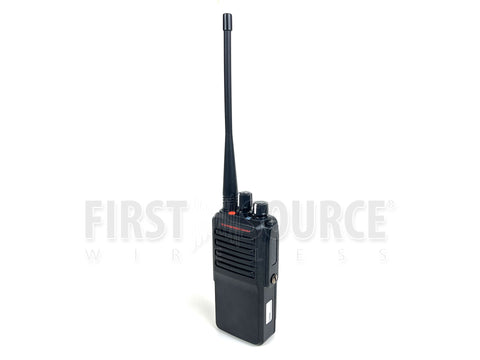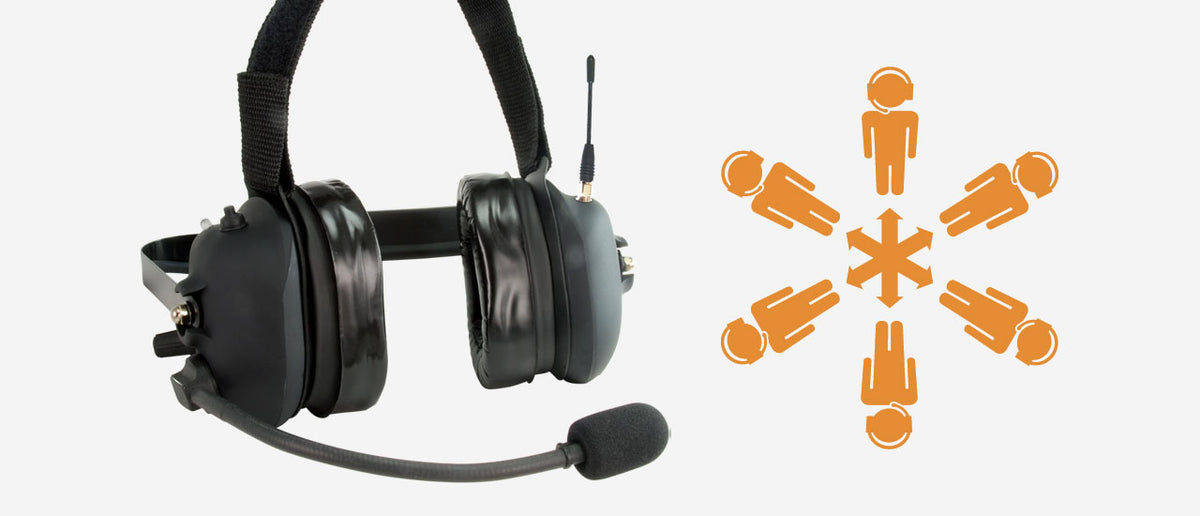Heavy towing and recovery companies face many challenges every day. From pulling tractor trailers out of ditches to recovering school buses, the recovery field is no joke, and often times can be dangerous. That’s why it’s important for towing and recovery operators to have great communication to stay connected and ensure the safest possible outcome.
With a lot of communications technologies to choose from, it can be hard to know which will work best for your team. In this article, we’ll review the communications technologies that will help ease the challenges heavy towing drivers face.

What Challenges Are Faced?
- Safety
- Staying efficient
- Communication
One of the first concerns of those involved in heavy towing and recovery is the surrounding pedestrians and any passengers in the vehicle in question. When a semi-truck goes off the highway and needs to be recovered, it is important for the recovery team to have enough space to operate the machinery safely.
Another challenge faced in this industry is efficiency. Tow truck drivers and heavy recovery workers must be efficient in their work because often the heavy vehicles they are moving are obstructing traffic.
In addition to the outside factors of heavy towing and recovery like other drivers on the road and efficiency, some of the biggest challenges in the industry are jackknifing and soft shoulder/mud extraction. Jackknifing demands extensive experience and creativity on the operator’s part to get the road cleared properly and safely. Furthermore, soft shoulder and mud extraction often require winching back onto pavement. These challenges require extreme communication.
During these operations, the machines used are loud and often far apart causing obstacles in communication. Every one of these challenges can be lessened or positively effected with clear communication and improve tow truck safety.
Why Cell Phones Won’t Cut It
There are many tow-truck operations and businesses that conduct their communication through cell phones. This may be a viable communication option for small operations like a commuter vehicle on the side of the highway that ran out of gas, but for bigger operations like heavy towing and recovery, more reliable communications technology should be employed.
Two-way radios are a better communication option than cell phones for tow-truck drivers for a variety of reasons. The first main reason is, it is illegal in most states to drive while using handheld devices like cell phones. A Bluetooth headset that connects to the phone could be a solution; however, these headsets and phones are not built for challenging environments and can easily disconnect in low service areas.
In some towing situations, the truck will have to go off road or in rural areas where cellular connection is spotty. With a two-way radio, users do not have to worry about losing signal. In addition to signal, drivers need to consider the conditions in which they are working and if their communications technology can withstand those conditions.
For instance, many crashes or incidences where towing is necessary, there is weather occurring or having recently occurred. Often there is mud, snow, high wind, rain, etc involved. Two-way radios are built to last and work consistently in these environments; they can be accidentally dropped in mud, work in freezing temperatures, and more.
Cell phones are not built to withstand, let alone function in these environments. Think about the last time you used your cell phone on a cold day and how quickly the battery life dropped—two-way radio batteries are built for freezing temperatures.
Two-way radios are also great for efficiency; with cell phones, workers must worry about someone missing the call or they must wait for a dial. With two-way radios and communications headsets that use VOX, there is no delay in communication.
Lastly, during most heavy towing and recovery situations there are multiple vehicles and many team members. With two-way radios there can be as many people as needed communicating at once. Moreover, people from different teams can gather on the same channel to communicate (tow-truck drivers, machinery operators, police, firefighters, and more).
Below are technology options to ensure that heavy towing and recovery operations have clear and uninterrupted communication.
What are the communication options?
When choosing communications technology for those involved in heavy towing and recovery, our top priorities are hands-free capabilities, consistency, and safety features.
- Two-way radios
- Intercom headsets
- Hands free car kits
Two-Way Radios
Two-way radios are a useful tool for communication. They have been widely used by tow truck drivers, giving them fast communication in real time. Additionally, two-way radio are used to respond to emergencies, so the radios often come with useful features like emergency notifications, GPS, and more.
Features like emergency notifications allows drivers to send SOS signals. As stated above, heavy towing and recovery can be challenging and often dangerous. Drivers need access to communications technology that can send out emergency signals to get help asap. Two-way radios also often have GPS location and data abilities. This feature is great for tow-truck drivers because it can help them identify the safest and quickest routes.

Solutions
- Xpresscomm Two-Way Radio
- Motorola Wave TLK100
- Mototrbo Series
Headsets
When multiple tow truck drivers arrive on scene you need to be sure everyone is connected to get the job done right. Intercom dual muff headsets allow multiple drivers to keep communicating even when you’re not next to each other. If assisting on a larger scale recovery situation, one recovery driver may be in the truck while the other recovery driver is giving directions 1000 feet away. Communication is vital in these situations to recover vehicles in a timely and safe manner. Intercom headsets have a few benefits in this situation. One being it keeps drivers’ hands free to attend to more important tasks. And another being you can easily talk to the entire crew at once even if they’re hundreds of feet away. This limits any miscommunication, improves safety by alerting the team quickly if emergencies arise, and gets the job done faster.
Being around heavy machinery and loud trucks hinders communication. Intercom headsets with noise canceling technology block out loud noise environments so you can hear and respond back clearly.

Headset Solutions
- Team Communication System Headset

- 3M Peltor Litecom Pro III
- 3M Peltor Protac XPI
Hands Free Car Kits
While cell phones can’t be used in vehicles, there is an alternative that allow you to still communicate hands free when using a cell phone. Hands Free Car Kits from AdvanceTec is a vehicle communication system that mounts to your car’s dash and is meant to improve driver safety with an easier way to communicate.
In the communication industry we’re seeing a trend towards push to talk over cellular apps (PoC) like Voxer and Zello that can be downloaded from the app store on your phone. These apps allow your entire fleet of employees to be able to instantly connect with their team at the push of a button. This reduces the need for calling each individual person.
The system setup includes a cradle to hold the phone securely in place with an external speaker and noise canceling microphone to hear and respond to calls or the PoC. It also includes a push to talk button that sits close to the driver’s hand, so they can respond back but still keep their hands on the wheel.
This is a great set up for towing companies who communicate a lot inside vehicles. It allows for easier communication on cell phones by improving safety and keeping your drivers focused on the road.
The options include a kit for Kyocera, Sonim, Cat, Samsung, and Motorola cell phones and two-way radios.
Here at First Source Wireless, we can help your towing and recovery company find the right communicaiton solution that fits your needs. We understand the importance of having great communication. Whether your looking for more advanced options or enhancing your exisiting solution, contact us today!



